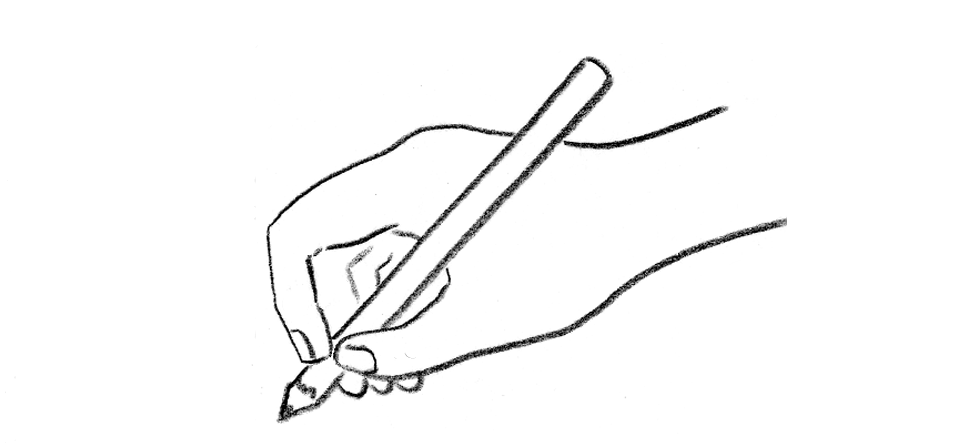Standing While Drawing & Writing
Writing or drawing while standing at a vertical surface—an easel, white board, or any vertical surface in a house (wall, fridge, glass door)—has these benefits:
- the hand and forearm fall naturally in the correct position
- arm movement is free—The heel of the hand is not “planted” in one position. When the hand is “planted”, movement is restricted to only the fingers.
- downward strokes come naturally, which is similar to the top to bottom direction used when writing letters
Take the toddler out of the highchair so they can stand while they color and scribble. Let the four year-old draw a dog on the garage wall. Give the 7 year-old an easel. Challenge the 12 year-old to draw while standing.
An easel has a slanted surface, which is more comfortable to work at than a straight vertical surface. Make a simple easel by leaning a board against a wall. This could be an old bulletin board or whiteboard. (Stabilize the board at the top where it touches the wall and block the bottom.)
Sitting While Drawing & Writing
Most of our drawing and writing is done while sitting at a table. The arm rests on the surface of the table, stabilizing the hand and arm movement.
When sitting:
- feet are flat on the floor (or a step stool or a stack of books)
- knees are at the same level as the hips
- arms, bent at the elbow, rest on the table top
- shoulders are relaxed, not scrunched up toward the ears
Maintain the hand/wrist/arm position that is presented while standing. Watch for “planting” of the hand—the hand and forearm should rest on the table top and provide stabilization for the arm, but not constrict movement. The non-writing hand stabilizes the paper.
A child-size chair and table helps tremendously, if available. Adjustable tables and chairs are available for the growing child.
Relaxing While Drawing & Writing
Just as we like to see a child relaxing with a book, we love to see a child lounging with a pencil and paper. A relaxed posture while writing/drawing has it’s place and time. Simply remember to include plenty of practice time in the standing and/or sitting positions.
Infants as well as 12 year-olds benefit from “tummy-time”. Therapist recommend that children lay on their stomach while propping their upper body with their arms. This position may be awkward for writing, but is fine while watching TV, reading or playing with small toys.
Outdoor activities like swinging from bars on a jungle gym, climbing a rock wall or walking like a crab develop the muscles and skills needed for good posture.











